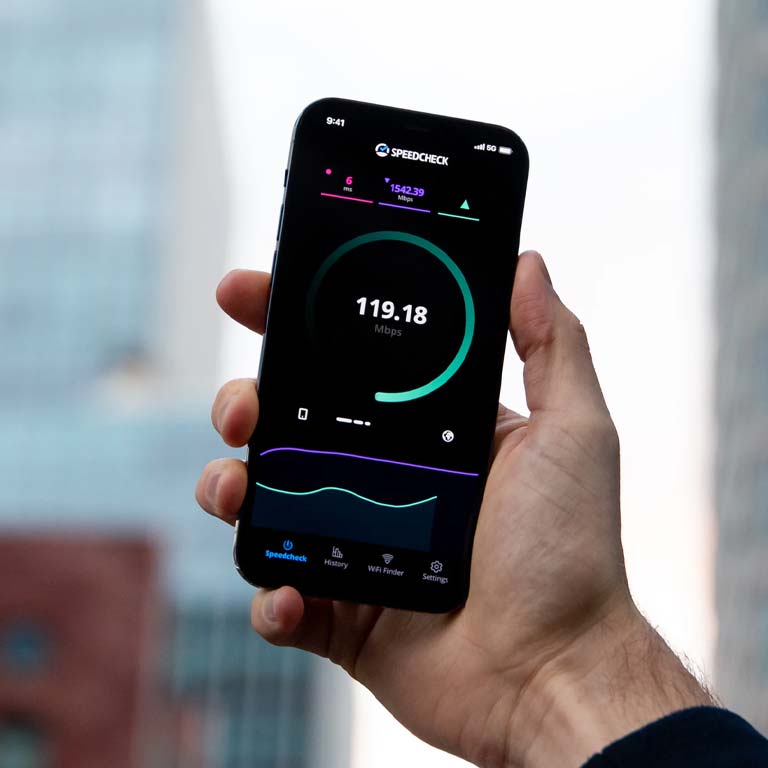


The relationship between UX and SEO
16/07/2021
Search engines, like Google, Bing and Yahoo have derived their success from the ability to deliver the most relevant and authoritative content to users based on what they're looking for. Increasingly however, these search giants – and Google especially – are focussing not just on whether a web page has content that's relevant to the user's query, but crucially also on the quality of experience that the website will deliver. As part of a much wider trend across the digital industry to recognise the phenomenal power there is in prioritising users' experiences of digital products, search engines understand that users don't simply want to see relevant content, they want the experience of browsing and digesting that content to be as enjoyable and easy as possible. In turn, search engines that can deliver the best experience of browsing the web will be rewarded with increased customer loyalty and engagement, even though they don't have any direct control over the websites they list in their results. It is for this reason that search engines are developing new ways to measure and assess the quality of User Experience (UX) that websites offer visitors and are beginning to use these metrics in their ranking algorithms.
Why is UX Important to Search Engines?
 Marketers and website owners will likely be familiar with many of the more traditional strategies associated with Search Engine Optimisation (SEO), such as link building, the use of metadata (e.g. Title Tags) and keyword placement, for example. What may have passed you by however, is the steady pace at which elements of UX are being rolled into what's considered SEO best practice, and how the relationship between UX and SEO is growing increasingly stronger. The smartphone revolution has fuelled this change, with people using smaller devices to perform increasingly complex tasks, often while on-the-go or in-between other activities. The need for websites to deliver quality, intuitive, streamlined experiences is now more important than ever, since this is increasingly what search engines want to connect users with. These changes have been slowly taking place over many years, with search engines already prioritising fast-loading websites to recognise mobile users with poor data speeds, as well as punishing websites that aren't properly optimised for smaller devices; more recently however, Google has taken bolder measures to accelerate the importance of UX in a wider sense for website owners.
Marketers and website owners will likely be familiar with many of the more traditional strategies associated with Search Engine Optimisation (SEO), such as link building, the use of metadata (e.g. Title Tags) and keyword placement, for example. What may have passed you by however, is the steady pace at which elements of UX are being rolled into what's considered SEO best practice, and how the relationship between UX and SEO is growing increasingly stronger. The smartphone revolution has fuelled this change, with people using smaller devices to perform increasingly complex tasks, often while on-the-go or in-between other activities. The need for websites to deliver quality, intuitive, streamlined experiences is now more important than ever, since this is increasingly what search engines want to connect users with. These changes have been slowly taking place over many years, with search engines already prioritising fast-loading websites to recognise mobile users with poor data speeds, as well as punishing websites that aren't properly optimised for smaller devices; more recently however, Google has taken bolder measures to accelerate the importance of UX in a wider sense for website owners.
In an effort to help define and measure UX, Google’s research team have developed the 'HEART Framework', which stands for Happiness, Engagement, Adoption, Retention, and Task Success. This simple acronym provides digital practitioners with a great heuristic method of checking whether they're adequately attending to users' needs. The framework can be useful regardless of the size of your website or business, however some aspects of it may not be as applicable to every business and will need to be adapted in way that's sympathetic to the type of content you produce.
Happiness
As the name suggests, this metric is about user satisfaction. This can be measured with surveys or feedback from users. It is important to do this regularly to capture the long-term feelings towards the website, particularly after making changes to the website's layout or the user journey.
Engagement
This encompasses how a user interacts with a website, such as how often the website is visited and how long users stay and engage with the content. This can vary depending on the type of page, as some may only need a short visit, such as checking the weather or bus times.
Adoption
Defined by the number of new users, adoption measures how these numbers change within a specific time period. There is some clear overlap between different factors that influence adoption, since this won't only be UX-driven, with Customer Experience (CX) and marketing also playing important roles. Either way, it is still an important metric to watch for in an SEO context.
Retention
This focuses on measuring returning users for a certain duration of time. Whether users are returning to make another purchase, retaining or renewing a subscription, or coming back to check for updates, having an understanding of how well you're retaining users can be a great indicator over whether you're doing something right.
Task Success
Task success looks at how easily a user can complete a task, such as registering as a new user or going through the checkout process. Metrics to look out for include how long it takes for a task to be completed, how many users complete a task successfully, as well as how many users come across an error in their journey.
How do search engines measure UX?
Google has recently introduced a list of requirements that could give a website a ranking boost, called the Core Web Vitals (CWV). This new algorithm developed by Google prioritises important aspects of UX by measuring things such as how quickly interactions are processed (First Input Delay), how quickly content loads (Largest Contentful Paint) and whether the page flow is smooth as the user progresses through it (Cumulative Layout Shift). Paying close attention to these new metrics can help to boost page ranking, as well as ensure you're delivering a good experience for your users.
Mobile Optimisation
 Over half of web traffic is made via smartphones, so having a website that intuitively works well on a small screen size is vital for both UX and SEO combined. Designing a website from a mobile-first approach (then latterly scaling up the design concepts for tablet and desktop screens), is the industry-standard method for ensuring all the design thinking and problem-solving that goes into the creation of a new digital product is done with smaller screens in mind. This approach also helps to distil the content and functionality down to only what's really necessary, which is another important aspect of good UX design – really understanding the specific goals and problems users have, and then solving them without putting a bunch of other stuff the business might deem important in users' way.
Over half of web traffic is made via smartphones, so having a website that intuitively works well on a small screen size is vital for both UX and SEO combined. Designing a website from a mobile-first approach (then latterly scaling up the design concepts for tablet and desktop screens), is the industry-standard method for ensuring all the design thinking and problem-solving that goes into the creation of a new digital product is done with smaller screens in mind. This approach also helps to distil the content and functionality down to only what's really necessary, which is another important aspect of good UX design – really understanding the specific goals and problems users have, and then solving them without putting a bunch of other stuff the business might deem important in users' way.
Search engines have been checking whether websites are adequately tailored for mobile displays for a number of years already, and already use this data in their ranking criteria.
Headings
 Headings have always been a crucial part of how websites are optimised for SEO, but they're also important for UX too since they help users understand 'visual hierarchy' and page flow. Structuring your content with appropriate heading tags, such as H1 and H2 tags helps to organise the content logically for both users and search engines.
Headings have always been a crucial part of how websites are optimised for SEO, but they're also important for UX too since they help users understand 'visual hierarchy' and page flow. Structuring your content with appropriate heading tags, such as H1 and H2 tags helps to organise the content logically for both users and search engines.
Search engines use headers to understand the relevance of the content below them, which in turn helps them to rank the page accordingly and list it for relevant search queries.
Page Speed
 Page speed is no newcomer in terms of being an important metric that influences page ranking, but the effect that a slow website has on UX is cementing the value of this metric for the long-term future.
Page speed is no newcomer in terms of being an important metric that influences page ranking, but the effect that a slow website has on UX is cementing the value of this metric for the long-term future.
Research has shown that if a website takes longer than four seconds to load, then around 25% of users will head back to find a faster alternative. Optimising content such as making sure image sizes have been kept to a minimum and making sure the code is as light as possible, all while having a good hosting platform or Content Delivery Network (CDN), can help to boost overall page ranking.
If a page or step in a web journey is known to be slow, adding a loading spinner will reduce the negative impact of this on UX since it informs the user that their interaction has been registered and that the website is working on their request.
Layout
 Whilst it's valuable for websites to be unique and recognisable from a branding perspective, familiarity is a really important tool in the UX practitioners toolkit as well as for SEO. Jakob's Law is a UX heuristic that emphasises the fact that users spend more time on other peoples' websites (collectively) than on their own. For this reason, they bring all their experiences and expectations with them when they land on your website. Research has shown that users don't necessarily want an experience that's completely unique from everything they've come across before, they actually want it to feel and work in a consistent manner with what they're used to. Encountering a website that is too different from what they're used to will drive down engagement and increase exit and bounce rates, which is bad for SEO, but also indicative of poor UX, since users are struggling to fulfill their goals easily.
Whilst it's valuable for websites to be unique and recognisable from a branding perspective, familiarity is a really important tool in the UX practitioners toolkit as well as for SEO. Jakob's Law is a UX heuristic that emphasises the fact that users spend more time on other peoples' websites (collectively) than on their own. For this reason, they bring all their experiences and expectations with them when they land on your website. Research has shown that users don't necessarily want an experience that's completely unique from everything they've come across before, they actually want it to feel and work in a consistent manner with what they're used to. Encountering a website that is too different from what they're used to will drive down engagement and increase exit and bounce rates, which is bad for SEO, but also indicative of poor UX, since users are struggling to fulfill their goals easily.
